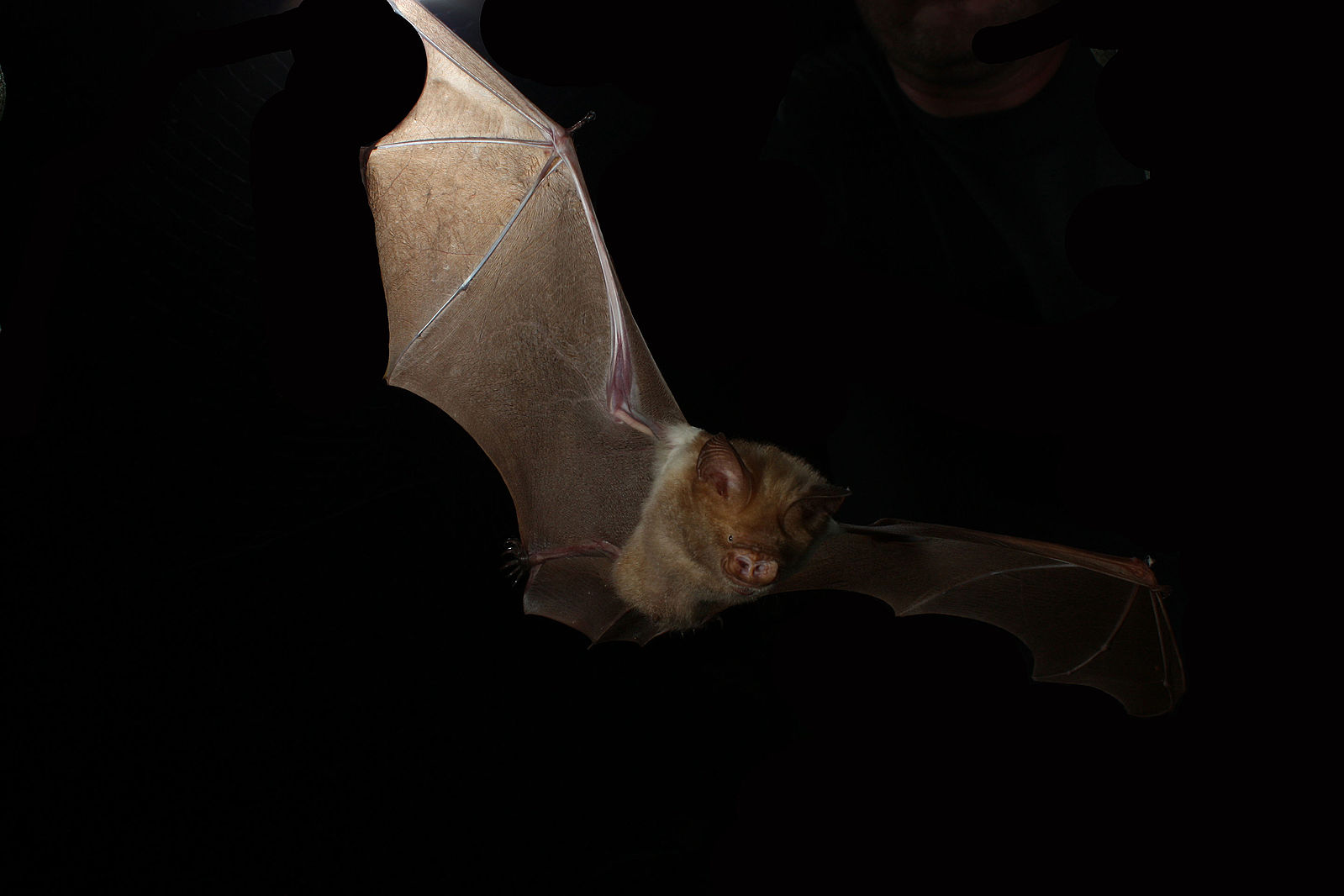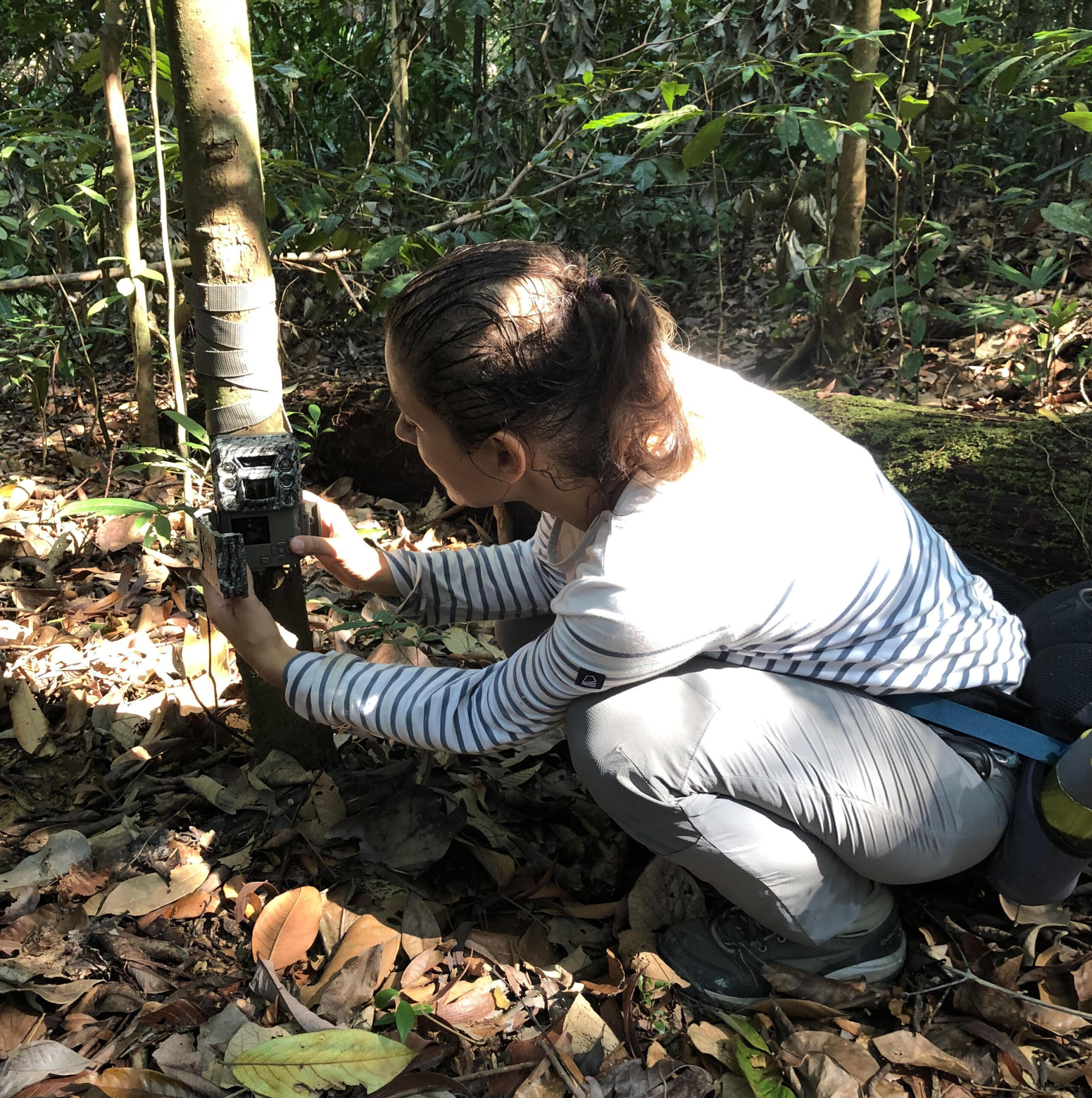- Researchers have found that bats specialized to feed on insects within the dense canopy of tropical forests are disproportionately affected by hydropower development.
- The study in Peninsular Malaysia adds to a growing body of evidence demonstrating how hydropower developments impoverish tropical ecosystems.
- Although forest-specialist bats were lost from the flooded landscape, bats that forage along forest edges and in open space were still present.
- To minimize localized extinctions, the researchers advocate a preventive rather than mitigative approach to hydropower planning that prioritizes habitat connectivity and avoids creating isolated forest patches.
Flitting through the forest foliage, darting between branches and flawlessly negotiating their way around gargantuan tree trunks, bats have evolved exquisite adaptations to their forest homes. Although inaudible to human ears, the tropical forest canopy is abuzz every night with the tiny mammals’ echolocating calls as they pinpoint and gobble up their insect prey with deft precision.
But these high-performance adaptations, evolved over millions of years, could be the undoing of many species in the face of unprecedented human development pressures, according to new research.
Scientists studying insect-eating bats in Peninsular Malaysia have demonstrated that forest-specialist species are particularly prone to local extinction following flooding of the landscape for hydropower development. In contrast, species that find their meals along forest edges or clear above the canopy — which typically have a larger body size, are slower-moving and capable of flying longer distances — were less affected by the development. The team published their results recently in the journal Biological Conservation.
Although biologists have long sounded the alarm that hydropower dams pose greater risks to tropical biodiversity than solar or wind power, biodiverse waterways and forests continue to be dammed and flooded in many parts of Southeast Asia.
“River damming, by favoring the creation of a myriad of small islands of poor habitat quality, triggered a wave of insectivorous bat extirpations,” Ana Filipa Palmeirim, a tropical forest biologist at the Research Center for Biodiversity and Genetic Resources (CIBIO) at the University of Porto in Portugal and co-author of the new study, told Mongabay in an email.

The finding that forest fragmentation due to hydropower development can essentially restructure bat communities is “fundamental” information that will help conservation planners design effective management plans aimed at minimizing biodiversity losses, Palmeirim said.
The researchers studied bats at the 260,000-hectare (642,500-acre) Kenyir Lake, a waterbody created in 1986 when the Kenyir River was blocked for a hydropower project. The damming transformed the terrain of forested peaks into more than 340 islands of varying size and suitability for the animals and plants that suddenly found themselves stranded.
Since bats zip through the air at tremendous speed, making them all but impossible to identify by eye, the researchers set up acoustic recorders to monitor their echolocation calls. Between September and October 2019, they gathered 9,360 hours of recordings from 26 separate islands and two nearby control sites on the mainland.
Bat calls are closely associated with their foraging activity and have a distinct “signature” that enabled the researchers to assign the calls to one of three categories depending on whether the bat foraged in the forest interior, stuck close to forest edges, or searched for prey in open space.
Edge and open-space bats were detected at every site, but the more isolated islands in the middle of the lake were unsuitable for the forest-specialist bats, the study says. Forest species were, however, still present on islands that retained dense forest cover, an insight that the researchers say demonstrates the importance of preserving good-quality forest corridors in all development projects.

The reason for the varied responses among bats could come down to their basic biology, according to Quentin Hazard, a master’s student at CIBIO at the time of the research and study lead author. “Forest bats are not adapted to fly across water matrixes because they don’t have the wing morphology or call structure to cope with that sort of environment,” he told Mongabay. “They need clutter to know where they are, so in these open spaces full of water they’re not going to do well.”
The localized loss of forest-specialist bats from isolated and degraded islands are indicative of wider patterns across the region. Insect-eating bats are thought to be particularly prone to extinction due to deforestation, with a 2003 study forecasting that if the rate of forest loss in the region persists, nearly one-quarter of Southeast Asia’s bat species will be extinct by 2100.
Peninsular Malaysia is home to roughly 50 species of insectivorous bats. Given their vital ecological role in pollination, pest control and the food chain, any widespread losses would be a devastating and irreversible blow not only to the health of tropical forests, but also to the region’s agricultural output, Hazard said. “A ton of studies show that bats save farmers billions of dollars by just eating pests, so losing bats would be a nightmare.”

The study adds to the growing body of evidence demonstrating how patterns of biodiversity are affected by flooding-induced forest fragmentation. Previous studies in other parts of Southeast Asia and from the Brazilian Amazon, for instance, show that the composition of reptile, bird, and ground- and tree-dwelling mammal communities shifts following inundation of forested landscapes for hydropower.
Heightened awareness of the impacts of development on bats is timely in fast-developing mainland Southeast Asia, a part of the world that has experienced spillover of viruses from animals to humans following disturbance of bat habitats in the past. Pandemic experts are increasingly concerned, for instance, about rampant Chinese development in Laos that they say overlooks the risk of bringing bat populations and humans into closer proximity.
Palmeirim is involved in many similar studies that gauge the biodiversity impacts of hydropower in other parts of Southeast Asia, China and the Brazilian Amazon. “We are now reaching a good understanding on how biodiversity is generally affected by [hydroelectric dams],” she said.
According to Palmeirim, the key to sustainability lies in the planning process. Hydroelectric developers should apply a “preventive rather than mitigative” approach to their projects, she said. Crucial considerations include preserving habitat connectivity by preserving areas of structurally complex forest, avoiding the creation of isolated pockets of forest, and protecting surrounding mainland forests to ensure that displaced species continue to survive.
The ideal situation, she added, would be for hydropower projects to be completely clear of any areas of intact tropical forest.
Banner image: The trefoil horseshoe bat (Rhinolophus trifoliatus), an insect-feeding bat species found in tropical forests in Peninsular Malaysia. Image by Daverbennett via Wikimedia Commons (CC BY-SA 4.0).
Citations:
Hazard, Q. C., Froidevaux, J. S., Yoh, N., Moore, J., Senawi, J., Gibson, L., & Palmeirim, A. F. (2023). Foraging guild modulates insectivorous bat responses to habitat loss and insular fragmentation in peninsular Malaysia. doi:10.1016/j.biocon.2023.110017
Palmeirim, A. F., Vieira, M. V., & Peres, C. A. (2017). Non-random lizard extinctions in land-bridge Amazonian forest islands after 28 years of isolation. Biological Conservation, 214, 55-65. doi:10.1016/j.biocon.2017.08.002
Yong, D. L., Qie, L., Sodhi, N. S., Koh, L. P., Peh, K. S., Lee, T. M., … Lim, S. L. (2010). Do insectivorous bird communities decline on land-bridge forest islands in peninsular Malaysia? Journal of Tropical Ecology, 27(1), 1-14. doi:10.1017/S0266467410000520
Lane, D. J., Kingston, T., & Lee, B. P. (2006). Dramatic decline in bat species richness in Singapore, with implications for Southeast Asia. Biological Conservation, 131(4), 584-593. doi:10.1016/j.biocon.2006.03.005
Brook, B. W., Sodhi, N. S., & Ng, P. K. (2003). Catastrophic extinctions follow deforestation in Singapore. Nature, 424(6947), 420-423. doi:10.1038/nature01795
Epstein, J. H., Field, H. E., Luby, S., Pulliam, J. R., & Daszak, P. (2006). Nipah virus: Impact, origins, and causes of emergence. Current Infectious Disease Reports, 8(1), 59-65. doi:10.1007/s11908-006-0036-2
Carolyn Cowan is a staff writer for Mongabay. Follow her on Twitter @CarolynCowan11
FEEDBACK: Use this form to send a message to the author of this post. If you want to post a public comment, you can do that at the bottom of the page.














